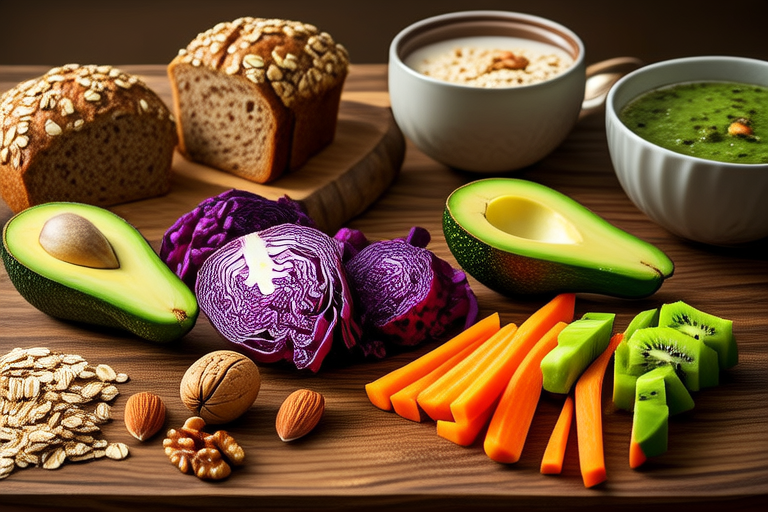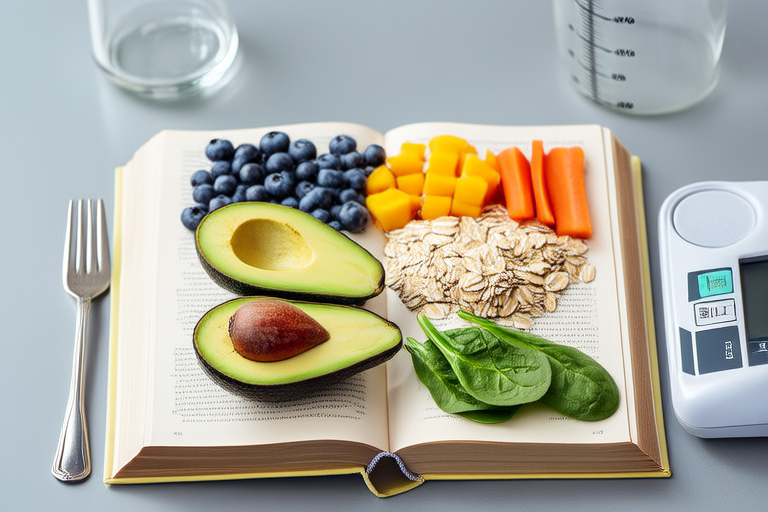Unlocking the Secrets: A Deep Dive into the Nutritional Components of Your Diet
Nutrition is the cornerstone of health and well-being, influencing everything from energy levels to long-term disease prevention. Understanding the essential components of a balanced diet empowers individuals to make informed dietary choices that support their physical and mental health. This article delves into the critical nutritional components—macronutrients and micronutrients—and explores their roles in maintaining optimal bodily functions. Additionally, practical strategies are provided to help readers evaluate and enhance their dietary habits.
The Role of Macronutrients in Nutrition
Macronutrients are the primary nutrients required by the body in large amounts to provide energy and sustain vital functions. They include carbohydrates, proteins, and fats, each playing a unique role in maintaining health.
Carbohydrates: The Body’s Preferred Energy Source
Carbohydrates are often misunderstood, yet they are a fundamental part of a balanced diet. They serve as the body’s primary source of energy, particularly for the brain and muscles during physical activity. Carbohydrates are classified into two categories: simple and complex.
Simple carbohydrates, found in foods like fruits, milk, and sugar-sweetened products, are quickly digested and provide rapid energy. However, excessive consumption of refined sugars can lead to energy spikes and crashes, making it important to choose nutrient-dense options like whole fruits instead of processed snacks.
Complex carbohydrates, present in whole grains, legumes, and vegetables, are digested more slowly, offering sustained energy and promoting satiety. These foods are also rich in fiber, which supports digestive health and helps regulate blood sugar levels. Incorporating whole grains such as brown rice, quinoa, and oats into meals ensures a steady supply of energy while reducing the risk of chronic diseases like type 2 diabetes.
Proteins: Building Blocks of Life
Proteins are essential for growth, repair, and maintenance of tissues, making them indispensable for overall health. Composed of amino acids, proteins play a crucial role in building muscles, producing enzymes and hormones, and supporting immune function.
Complete proteins, which contain all nine essential amino acids, are found in animal-based foods like meat, fish, eggs, and dairy. Plant-based sources such as beans, lentils, nuts, and seeds also provide protein but may lack one or more essential amino acids. Combining complementary plant proteins, such as rice and beans, ensures a complete amino acid profile for vegetarians and vegans.
To optimize protein intake, aim to include a variety of high-quality sources in your diet. Lean meats, poultry, and fish are excellent choices, while plant-based options like tofu, tempeh, and quinoa offer versatile alternatives. Consuming adequate protein supports muscle recovery after exercise, promotes healthy aging, and aids in weight management by enhancing feelings of fullness.
Fats: Essential for Vital Functions
Fats are often vilified, but they are a critical macronutrient necessary for numerous bodily functions. Healthy fats provide energy, support cell membrane integrity, and facilitate the absorption of fat-soluble vitamins (A, D, E, and K). They also play a role in hormone production and brain health.
Fats are categorized into saturated, unsaturated, and trans fats. Saturated fats, found in animal products and tropical oils, should be consumed in moderation due to their association with increased cholesterol levels. Unsaturated fats, including monounsaturated and polyunsaturated fats, are heart-healthy options found in foods like avocados, olive oil, nuts, seeds, and fatty fish.
Trans fats, commonly found in processed and fried foods, should be avoided as they raise bad cholesterol levels and increase the risk of heart disease. To promote cardiovascular health, prioritize sources of unsaturated fats and limit saturated fats to less than 10% of total daily calories.
Micronutrients: The Power Behind Small Packages
While macronutrients provide energy, micronutrients—vitamins and minerals—are equally vital for maintaining health. Though required in smaller quantities, they play indispensable roles in various physiological processes.
Vitamins: Catalysts for Health
Vitamins are organic compounds that act as coenzymes, facilitating chemical reactions in the body. They are divided into two groups: water-soluble and fat-soluble.
Water-soluble vitamins, including vitamin C and the B-complex vitamins, dissolve in water and are not stored in the body. Regular intake through diet is essential to prevent deficiencies. Vitamin C supports immune function and collagen synthesis, while B vitamins are crucial for energy metabolism and red blood cell production.
Fat-soluble vitamins (A, D, E, and K) are stored in the liver and fatty tissues, allowing the body to draw on reserves when needed. Vitamin A promotes vision and skin health, vitamin D supports bone health, vitamin E acts as an antioxidant, and vitamin K aids in blood clotting.
Incorporating a wide variety of fruits, vegetables, whole grains, and lean proteins ensures adequate vitamin intake. For example, citrus fruits and bell peppers are rich in vitamin C, while leafy greens and fortified dairy products provide vitamin K.
Minerals: Supporting Structural and Functional Roles
Minerals are inorganic elements that contribute to structural components of the body and regulate numerous processes. Key minerals include calcium, magnesium, potassium, iron, and zinc.
Calcium and magnesium are essential for bone health, muscle function, and nerve transmission. Dairy products, leafy greens, and nuts are excellent sources of these minerals. Potassium, found in bananas, sweet potatoes, and spinach, helps maintain fluid balance and supports heart health.
Iron is critical for oxygen transport in the blood, and its deficiency can lead to fatigue and anemia. Red meat, poultry, beans, and fortified cereals are good sources of iron. Zinc, which supports immune function and wound healing, is abundant in seafood, meat, and seeds.
A balanced diet rich in diverse foods ensures sufficient mineral intake. Pairing iron-rich foods with vitamin C sources, such as combining spinach with lemon juice, enhances absorption and maximizes benefits.
Practical Tips for Evaluating and Improving Your Diet
Understanding the nutritional components of your diet is only the first step. Implementing practical strategies can help you make lasting improvements to your eating habits.
Assess Your Current Eating Patterns
Begin by tracking your food intake for a few days to identify areas for improvement. Pay attention to portion sizes, macronutrient distribution, and the presence of nutrient-dense foods. Are you consuming enough fruits, vegetables, and whole grains? Are processed foods dominating your meals?
Prioritize Whole, Unprocessed Foods
Focus on incorporating whole, minimally processed foods into your diet. These foods are naturally rich in nutrients and free from added sugars, unhealthy fats, and artificial additives. Swap refined grains for whole grains, sugary snacks for fresh fruit, and processed meats for lean proteins.
Practice Portion Control
Even nutritious foods can contribute to weight gain if consumed in excess. Use visual cues to estimate appropriate portion sizes—for example, a serving of protein should be about the size of your palm, while a serving of carbohydrates resembles a cupped hand.
Stay Hydrated
Hydration is an often-overlooked aspect of nutrition. Water supports digestion, nutrient transport, and temperature regulation. Aim to drink at least eight cups of water daily, adjusting for activity level and climate.
Plan Balanced Meals
Create meals that include a mix of macronutrients and micronutrients. For instance, pair grilled salmon (protein and healthy fats) with quinoa (carbohydrates and fiber) and steamed broccoli (vitamins and minerals). This approach ensures a well-rounded intake of essential nutrients.
Listen to Your Body
Tune in to hunger and fullness cues to avoid overeating or undereating. Eat slowly and mindfully, savoring each bite. This practice fosters a healthier relationship with food and prevents unnecessary snacking.
Conclusion
A balanced diet is built on a foundation of macronutrients and micronutrients, each playing a unique role in supporting health and vitality. By understanding the functions of carbohydrates, proteins, fats, vitamins, and minerals, individuals can make informed choices that nourish their bodies and prevent chronic diseases. Practical strategies such as assessing eating patterns, prioritizing whole foods, and planning balanced meals empower readers to take control of their nutrition. Unlocking the secrets of your diet is a journey toward improved well-being, enhanced energy, and a healthier future.










